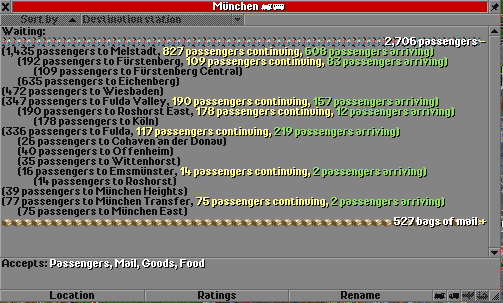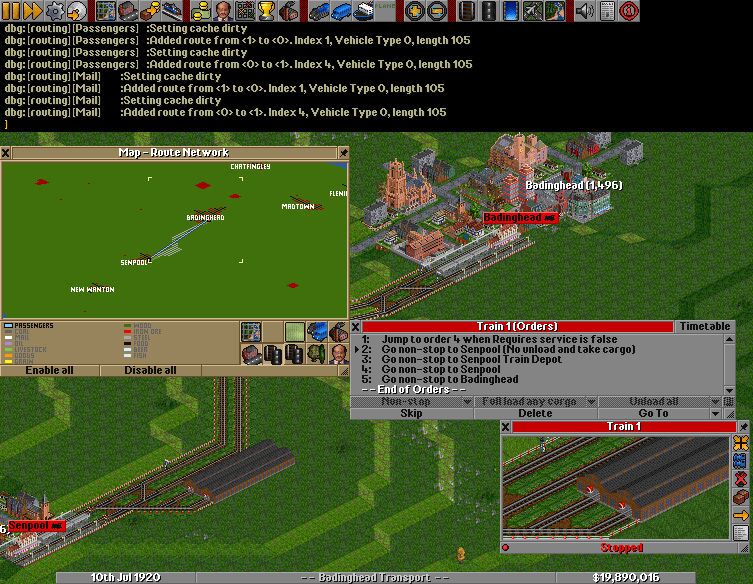

If you have a single big station where more passengers are generated than in all other stations added up, then obviously there is no symmetric distribution for those. With symmetric distribution the distribution algorithm tries to send the same amount of cargo or passengers in both ways between two stations.
#Openttd passenger destinations manual#
Manual distribution means that cargo isn't automatically distributed at all. You can choose which one to use per cargo in the "Cargo Distribution" group of the advanced settings.

With Cargodist you get three different modes of distribution for cargo or passengers. Since June 2013 Cargodist is included in trunk. Please post there if you have any questions about Cargodist. The forum topic has some more information. The main differences to YACD are that Cargodist a, only considers reachable destinations, not the whole map and b, precomputes the whole routing scheme in separate threads for performance reasons. Also the definition of transportation demand is seen as precondition to solving above problems and is handled first. In contrast to the Cargod est project the problems of routing cargo and balancing loads on different routes are seen as inseparable in Cargod ist and are thus solved together. There have been several other patches trying to achieve the same thing before. As passengers would have their own ideas about where to go and which vehicles to take you might see more congestion and a generally higher amount of passengers waiting at any station, though.

Any bus network in A and B with simple orders will do as long as it's connected to the train station. In the above example you wouldn't need to specify any "transfer and leave empty" orders, nor would you need to set up star-shaped bus networks. However, the more stations and vehicles you add the more complicated and unwieldy those systems get.Ĭargodist takes care of the transfers automatically and chooses destinations for the passengers involved. It is possible to allow those additional routes by setting up even more complicated order systems. Each of the vehicles would use "transfer and leave empty" orders and this solution would not allow passengers to go for B to A, nor to any of the trains stations or between the bus stops within one town. You can then have buses in B distribute the passengers among the bus stops by going back and forth between the train station and each bus stop in a star-shaped pattern. There a train can pick them up and transfer them again at the train station in B.

In classic OpenTTD you can have buses in A collect passengers from the various bus stops and transfer them at the train station. You might want passengers from any of the bus stops or the train station in A to travel to any of the bus stops or the train station in B and vice versa. In each of the towns you have a bus network linking several stops to the train station. Suppose you have a train going between towns A and B. You either have to use different vehicles for each destination or set up complicated order systems to do so. In classic OpenTTD, it is hard to distribute cargo from one source among multiple destinations.


 0 kommentar(er)
0 kommentar(er)
